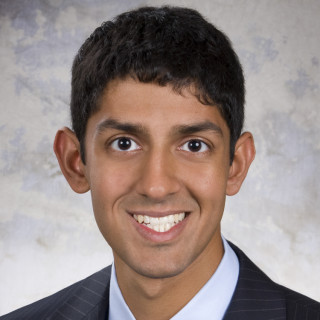
This past week, I had the privilege of attending the 2019 Association for Research in Vision and Ophthalmology (ARVO) Annual Meeting in Vancouver, Canada. It was a scientifically rich meeting of the minds, filled with innovative basic science, translational, and clinical research projects and ideas.
This year, the biggest buzz around the convention center surrounded the presentation of the DRCR.net Protocol V clinical trial results on Monday, April 29. The trial, which was published in JAMA on the same date to coincide with the meeting presentation, was a prospective, randomized clinical trial that aimed to assess the optimal treatment strategy for patients with diabetic macular edema (DME) and very good vision (defined as Snellen visual acuity 20/25 or better).
This trial was a multicenter collaborative effort that enrolled 702 patients over nearly three years and randomized patients into three separate groups with either initial observation (eligible for treatment with intravitreal aflibercept if visual acuity worsened on follow-up), initial focal laser (eligible for treatment with intravitreal aflibercept if visual acuity worsened on follow-up), and initial aflibercept intravitreal injection (eligible both for repeated injection or focal laser on follow-up based on predetermined criteria and investigator discretion). Patients were followed for two years from enrollment and the primary outcome was decrease in baseline visual acuity.
The results of the trial demonstrated that at two years, there were no significant visual acuity differences between any of the three groups and the mean Snellen visual acuity in all groups was 20/20. Similarly, there were no significant differences in central subfield thickness on optical coherence tomography (OCT) nor diabetic retinopathy severity scores between the groups at two years. Notably, about two-thirds of the patients in the initial observation groups never required intravitreal injection over the study period.
Limitations that should be noted for any clinical trial are that the patients who enroll and adhere to a clinical trial follow-up schedule may not be representative of real-world patients with varying adherence to follow-up visits and treatments. On a related note, the study population had very good glycemic control, which may have played a role in the relative stability of the retinopathy, edema, and visual acuity over two years. Still, this impactful and well-designed trial is the first of its kind to try and answer the question of how eye providers should optimally manage this patient population.
We hosted a discussion with two of the senior authors on the project on our podcast for retina specialists and the upcoming months will be filled with more analysis and debate of the study findings. We look forward to this ongoing conversation and upcoming posthoc subgroup analysis that will shed more light on what factors may contribute to the stability of disease in patients with good visual acuity and diabetic retinopathy with diabetic macular edema.
Dr. Jay Sridhar is an assistant professor of ophthalmology at Bascom Palmer Eye Institute in Miami, FL, where he also works as a vitreoretinal surgeon. He runs a podcast for retinal specialists at retinapodcast.com and can be reached at @retinapodcast.






